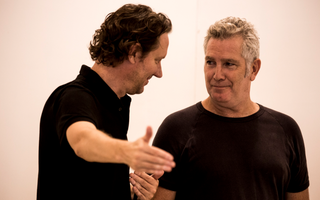 On Stage
On Stage
Hamlet as a play is concerned with the elements of theatre making. The play constantly refers back to its status as a play. This is a technique known as ‘metatheatre’.
This motif helps to expose the play’s interest in deception, masks and the performance of identity. This is also perhaps something to do with Shakespeare’s career as an actor for the King’s Men alongside his playwriting.
The following passage is one of the many instances in Hamlet that are metatheatrical. Hamlet is explaining to Gertrude and Claudius that he does not ‘seem’ to be mourning his father’s death, but that this is how he truly feels:
Seems, madam! nay it is; I know not 'seems.'
'Tis not alone my inky cloak, good mother,
Nor customary suits of solemn black,
Nor windy suspiration of forced breath,
No, nor the fruitful river in the eye,
Nor the dejected 'havior of the visage,
Together with all forms, moods, shapes of grief,
That can denote me truly: these indeed seem,
For they are actions that a man might play:
But I have that within which passeth show;
These but the trappings and the suits of woe.
Hamlet, Act 1, Scene 2, Lines 76-86
Students should take the time to read the passage above, making sure that they know the meaning of all the words and the sense of all the phrases. Then answer the questions below using textual evidence.
- What does Hamlet mean when he says ‘seems’?
- What elements of theatre does Hamlet allude to in his speech?
- From this speech, how do you suppose early modern actors played a character who is grieving?
- What is the conflict between perceived and real emotion in this passage?
EXTENSION:
Go through the play and note every point where someone is ‘seeming’. Compare your list with the rest of the class. How many different kinds of seeming did you identify?











